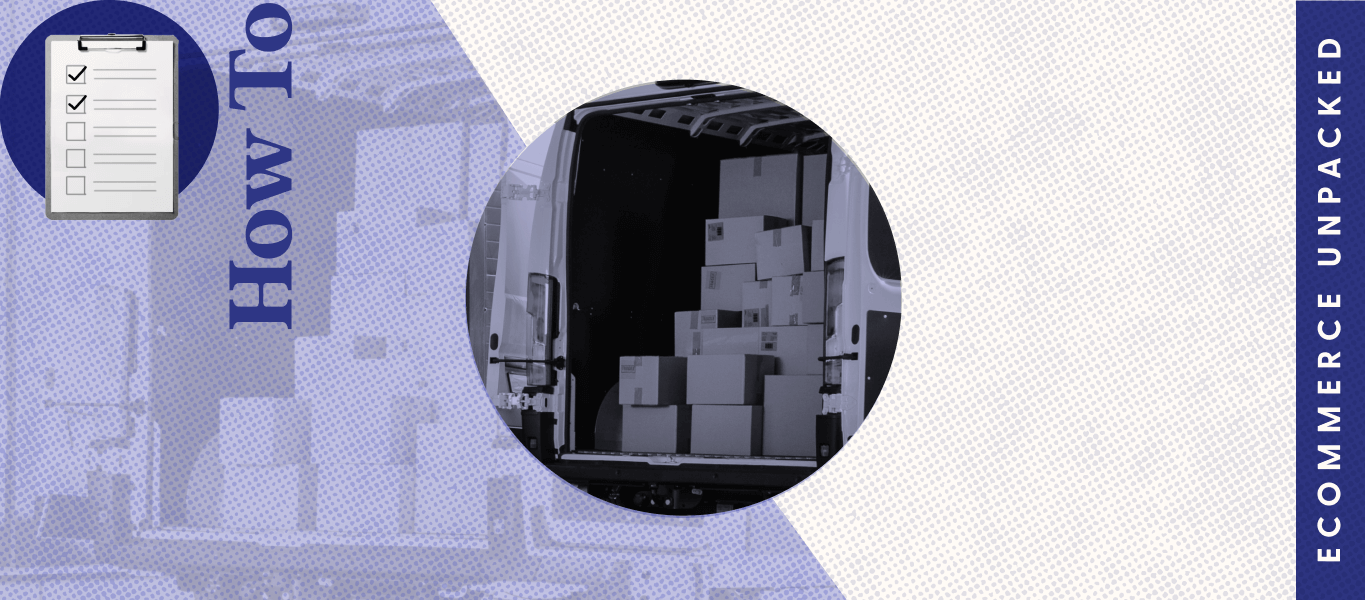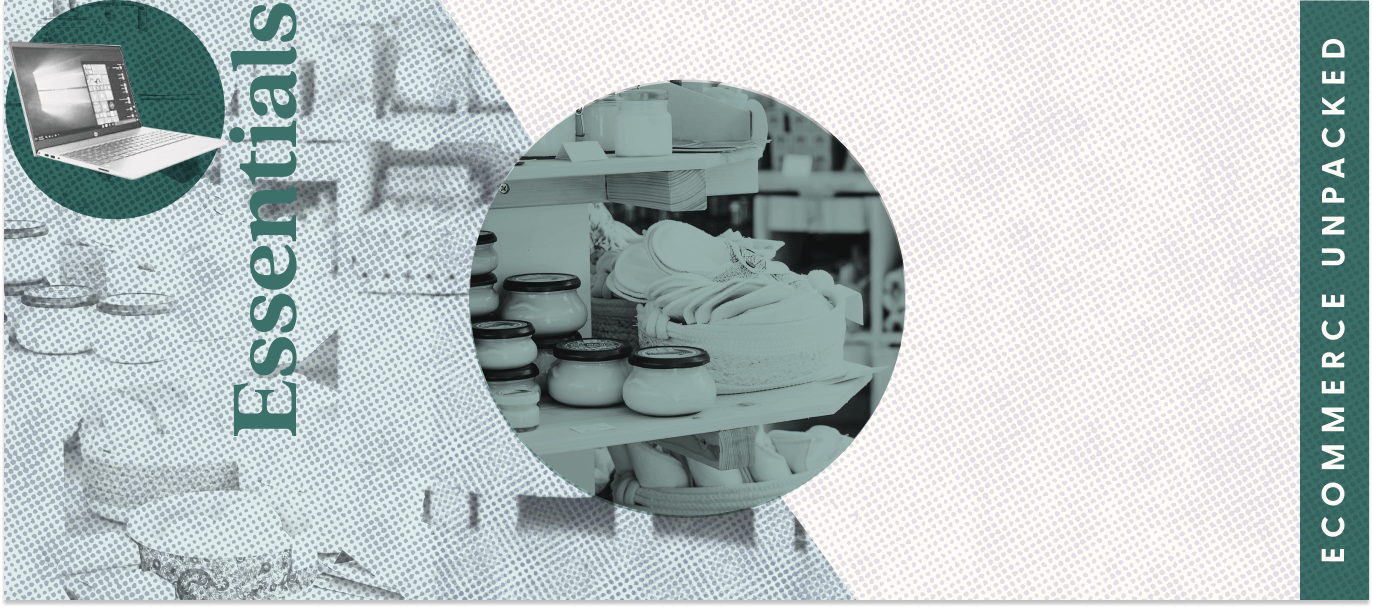In the ecommerce world, selling your products is only half the battle. Following through with efficient shipping is no small feat, but it’s crucial for winning and keeping customers.
Looking for practical ways to upgrade your delivery services while keeping costs in check? Read on to learn about five common ecommerce shipping problems and how you can solve them.
Key takeaways
- Ecommerce business owners can face a range of shipping problems, from ballooning costs and returned orders to slow delivery times.
- Customers want fast, easy, and affordable shipping, and will often go elsewhere if they don’t get it.
- Boosting efficiency, improving reverse logistics processes, and implementing technological ecommerce shipping solutions can help address these challenges and win customers.
What is ecommerce shipping?
Ecommerce shipping might sound simple in theory: A customer orders a product from an online store, and that business sends the product to their door.
In reality, ecommerce shipping involves a complex system of processes, including receiving and processing orders, packing the purchased products, printing shipping labels, monitoring deliveries, and even handling returns. Many businesses offer various shipping options and shipping methods, as well as notifications that keep customers informed about the status of their delivery.
It’s a lot to manage, but a well-oiled ecommerce shipping strategy is crucial for meeting customers’ expectations for fast, affordable, and easy deliveries. Doing this well can help a business set themselves apart from the competition.
How does ecommerce shipping work?
Ecommerce shipping can be broken into three stages: order receiving, order processing, and order fulfillment.
- Order receiving is the ongoing process of making sure the products an online shop offers are in stock and ready to ship. It involves checking products for damage, keeping inventory updated, and managing warehouse space.
- Order processing begins when a customer places an order. It involves verifying order data, including payment, shipping address, and any other relevant information.
- Order fulfillment involves packing the products and shipping them to the customer.
Each of these three stages is vital and depends on the others to create a positive customer experience..
5 ecommerce shipping problems
Now that we know what ecommerce shipping is, let’s look at five problems that often arise and how ecommerce businesses can solve them.
1. High cost of ecommerce shipping
The costs of maintaining a digital storefront are relatively low. It’s when an order is placed and the product needs to move that those costs start to climb. If a business is not using dropshipping (a model in which the merchant purchases products from a third party, who ships it directly to the customer), those costs can include warehousing and vehicle maintenance.
Even ecommerce businesses who dropship have to handle the various facets of customer service. They might offer free shipping to compete for customers, which can add complexity to the process—and, of course, there’s always the inevitable returns to manage. All of this can add up, eating into a business’s overall budget even before last mile delivery.
Last mile delivery is the last leg of an order’s journey from warehouse to customer, involving all the steps from a local transportation hub to the final destination. It’s arguably the most crucial stage of the delivery process, since it’s when the vast majority of delays happen. It’s also the most costly stage of the shipping process, taking up 53% of total shipping costs.
As ecommerce has continued to grow, the cost of effective shipping has grown, too. This has also elevated customer expectations, meaning businesses now have to pay more to compete, potentially drowning profits in their efforts to keep up.
The solution: Increase operational efficiency
Customers have come to expect fast, easy, and often free shipping. Failing to meet those expectations may save money in the short term, but it can also cause you to lose customers. The best way to reduce the costs of shipping, then, is by increasing operational efficiency.
Look for points of waste in your shipping process, and work to reduce that waste. This can often be achieved by using automation to streamline shipping operations. Focusing on optimization can lead to significant savings. In fact, organizations who optimize their supply chains have 15% lower costs on average. Keep in mind that this is an ongoing process. Continually refine your shipping process, looking for new solutions and strategies to reduce cost without sacrificing effectiveness.
2. Cumbersome & costly returns
Returns are an inevitable part of ecommerce shipping. Items might be ordered by mistake. They might be shipped to the wrong address. They might be damaged in transit. And sometimes, a customer just decides they no longer want the item they ordered. The National Retail Federation reports that about $428 billion in merchandise was returned in 2020 alone. The system for managing returns is called reverse logistics, and it can present the same costs and challenges as the process of shipping those items in the first place.
Inefficiency in reverse logistics can lead to costs that eat up profits. It can also damage customer relationships, hurting your chances for repeat business. What’s more, a poor return policy can stop orders before they happen. FedEx reports that 52% of consumers say they have abandoned an online purchase because of the return policy. Clearly handling returns is not just part of the cost of doing business in the ecommerce industry—it’s also a crucial part of sales and customer retention.
The solution: Optimize your reverse logistics
The old adage holds true here: Hope for the best and prepare for the worst. Expect that returns will need to happen, and take steps to optimize your reverse logistics. Doing so can help cut costs and improve customer satisfaction. Invest in a good customer support team and effective inventory management and delivery management systems.
Furthermore, take the time to refine your return policy. Make it clear to customers that you’ll handle returns with just as much care and efficiency as you handle deliveries. This can help set expectations and boost customer confidence at the point of sale, potentially reducing the frequency of those dreaded abandoned carts.
3. Slow or delayed deliveries
In the fierce competition for ecommerce customers, delivery time has become a key battleground. This has made offering two-day and even same-day delivery increasingly common sales tactics. In short, customers want their products fast, and the merchant who best delivers on that expectation often wins the day.
By the same token, delayed deliveries can cut a customer relationship woefully short. One study found that 69% of customers are much less likely to return to an online store if their order is more than two days late. This—combined with the fact that gaining a new customer can be as much as 25 times costlier than retaining a customer—makes short delivery times crucial.
The solution: Streamline the shipping process
Clearly, it behooves an ecommerce business to keep delivery times as short as possible. This can be done by implementing tools that help streamline the shipping process, such as route optimization software and automation tools that often come with ecommerce platforms. Another option is to implement anticipatory shipping, a system that predicts what shoppers will order based on behavioral data. Look for ways to simplify the supply chain, reducing the opportunities for delays. If properly managed, dropshipping can also be an effective way to keep delivery times short and customer satisfaction high.
4. High expectations for customer experience
Companies often focus on the frontend of customer experience—the digital storefront, attractive promotions, personalized shopping experiences, frictionless purchases, and so on. Refining all that is important, but it’s only the beginning of a customer’s experience. It’s just as vital to deliver high-quality service after an order is placed, all the way to final delivery and beyond. If this is the most difficult portion of the customer journey to get right, it also presents a key opportunity to excel where competitors may fail.
The solution: Focus on the customer journey
One way to help deliver a quality customer experience across the board is to foster the right kind of company culture. Talk the talk by communicating the kind of service and work ethic your business values, and walk the walk by exemplifying and incentivizing high-quality customer service. Refine your processes, listen to customer and employee feedback, and, crucially, take care of your team. One study suggests that happy employees are about 12% more productive.
Furthermore, make sure to optimize every possible step of your customer journey. Streamline your delivery processes as well as your reverse logistics system. Make your shipping options clear and your return policy reassuring. Consider collecting customers’ reasons for returns, and using that data to make changes aimed at preventing such problems in the future. Finally, ensure your customer service channels are open, easy to find, and highly responsive. This is another ongoing process that requires continually looking for big and small ways to optimize your customer experience.
5. The complexity of juggling shipping software
There is no shortage of apps and tools designed to help optimize ecommerce shipping. When those tools don’t integrate with each other and with your ecommerce platform, however, managing them can become a cumbersome job all its own. If your delivery solutions don’t actually save time, their purpose is clearly defeated.
The solution: Hone in on delivery management software
The trick here is to look closely at delivery management software options, selecting one that will truly streamline your operations at all stages. Depending on your business model, some features to consider include:
- Automatic dispatch management, which identifies idle drivers and assigns them new deliveries automatically
- Route optimization, which takes a variety of factors into consideration and recommends the best delivery routes for drivers
- Control dashboards, a single tool through which you can monitor and manage any and all delivery operations
- Real-time vehicle tracking, which can keep you and your customers updated on the location of their deliveries
- Order tracking, which allows customers to monitor the progress of their orders from start to finish
Note that many ecommerce platforms provide some shipping solutions, which have the advantage of being fully integrated with those platforms. If you venture outside your ecommerce platform for delivery management solutions, make sure they can talk with the rest of your digital tools.
Learn to manage your ecommerce shipping challenges today
As we’ve seen, shipping is a hugely impactful element of the ecommerce industry. Handled poorly, it can drain resources and chase away customers. Handled well, it can give ecommerce businesses a serious advantage over their competition. Use the five common problems we’ve addressed here as the starting point for optimizing your ecommerce shipping.
FAQs on ecommerce shipping challenges
What are good international shipping options for ecommerce stores?
Before identifying the best option for international shipping, it’s important to know whether you prioritize price or speed. The lowest price is usually First Class Mail International for packages four pounds or lighter, and USPS Priority Mail International for packages above four pounds. Keep in mind that these options can take weeks to arrive. For expedited shipping, consider FedEx International Priority®, and for something in the middle, consider USPS Priority Mail Express or FedEx Economy International.
How should I package fragile products?
- Choose a box that’s made for shipping and that’s only slightly larger than its contents.
- Position the items to minimize the risk of damage. For example, stack plates vertically, dismantle lampshades, and lay mirrors and picture frames with the glass side down.
- Wrap the items in cushioning material, and use air pillows or packing peanuts to fill empty space in the box.
- Ship items of similar weight together, and tie them together to minimize movement in transit.
- Seal the box with wide packaging tape.
- Mark the box as fragile.
How can I offer free shipping and still be profitable?
Consider these strategies for making free shipping financially feasible:
- Offer free shipping on a slower shipping option, with a faster option available at a premium.
- Offer free shipping for orders above a certain minimum.
- Limit free shipping to products with higher margins.
- Set product prices high enough to cover their own free shipping.



